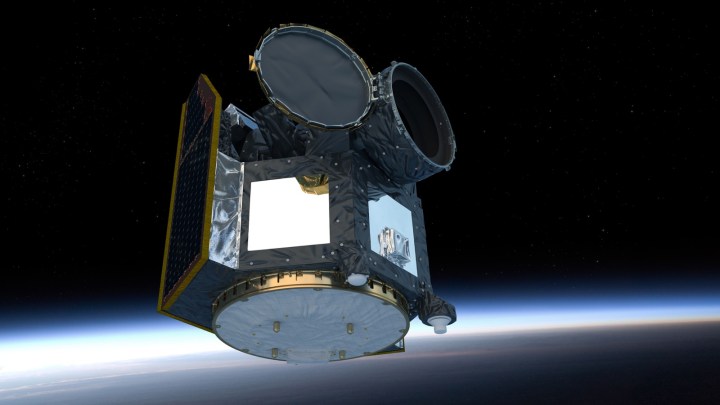Europe’s newest planet-hunting telescope, the CHaracterizing ExOPlanet Satellite or CHEOPS, has observed its first exoplanet and is ready to begin its scientific observations.
Launched in December 2019, the satellite is in orbit around Earth and captured its first image of a distant star in February this year. The next stage in getting the telescope ready to being scientific observations was confirming that everything worked as expected by imaging a known target.

“To measure how well CHEOPS performs we first needed to observe stars whose properties are well known, stars that are well-behaved — hand-picked to be very stable, with no signs of activity,” Kate Isaak, Cheops project scientist at ESA, explained in a statement.
The test observations went even better than expected, with the telescope achieving an even higher level of accuracy than was required. “We were thrilled when we realized that all the systems worked as expected or even better than expected,” CHEOPS Instrument Scientist Andrea Fortier said in the statement.
With that requirement met, the telescope could move onto observing its very first exoplanet.
The exoplanet CHEOPS observed is in the HD 93396 planetary system, located in the Sextans constellation around 320 light-years away. The targeted planet is the giant KELT-11b, almost three times the size of the sun but only one-fifth the mass of Jupiter. It has such low density that “It would float on water in a big-enough swimming pool,” according to David Ehrenreich, CHEOPS Mission Scientist from the University of Geneva.
The planet was first observed in 2016, and was chosen for CHEOPS’ first observation due to its large size. Because it is so big, it takes eight hours to pass in front of its star, which makes it difficult to observe using telescopes on the ground. As CHEOPS is space-based and able to observe long transit times, it could observe the planet and measure its diameter with great accuracy.
“The in-orbit commissioning phase was an exciting period, and we are pleased we were able to meet all requirements,” said Nicola Rando, CHEOPS project manager at ESA. “The satellite platform and instrument performed remarkably, and both the Mission and Science Operation Centres supported operations impeccably.”



